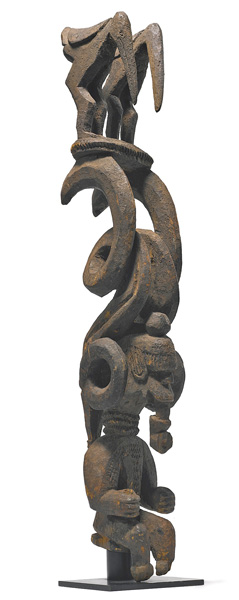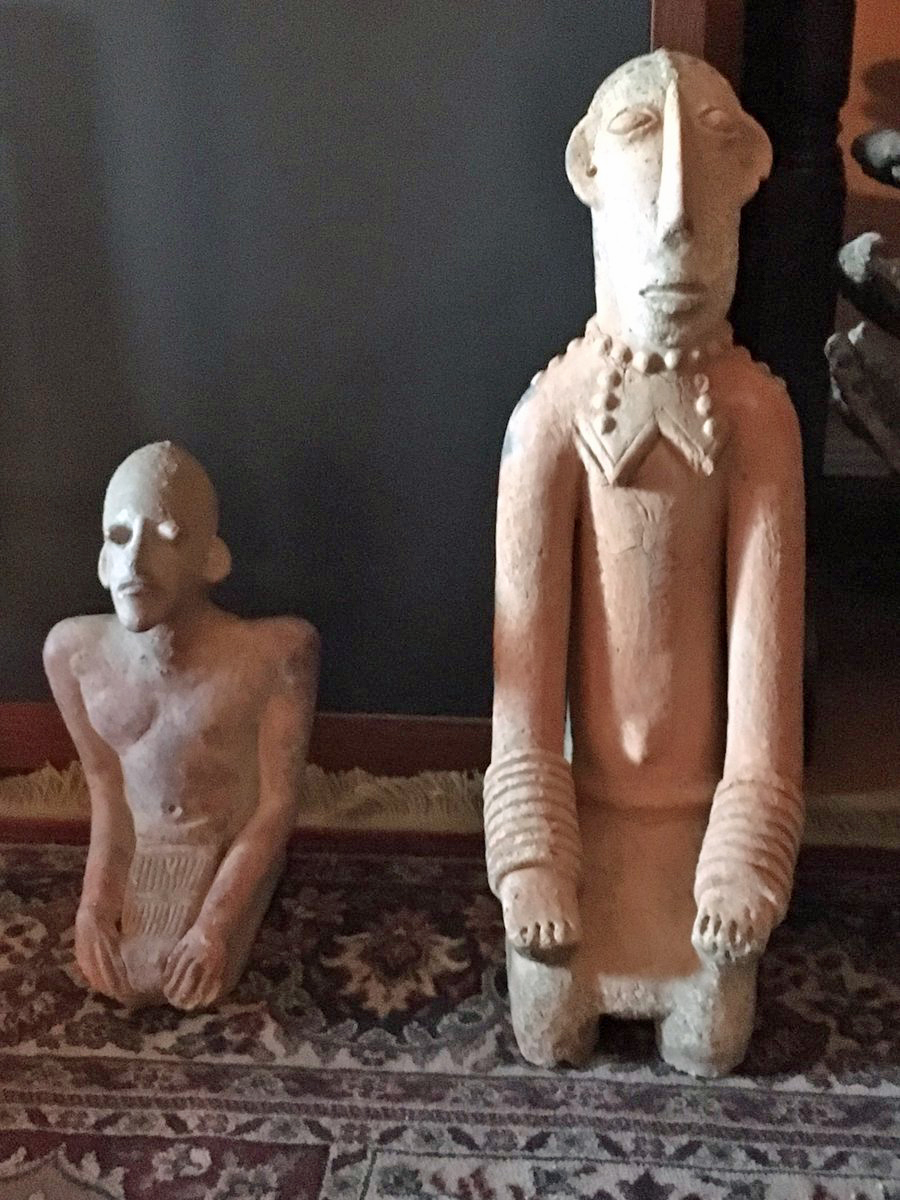Struck by Lega (finally)!!
November 24, 2022 Leave a comment
On November 21st and 22nd 2022 several items from the estate of Sara Roosevelt Wilford came up for auction across Sotheby’s and Doyle New York.

21 November 2022•14:00 EST New York
Lot #59 Yaure Mask, Côte d’Ivoire, possibly by Kuakudili
The Yaure piece sold well, helped by a Mathias Komor provenance and the fact that a snippet of the eye area was used as the lead-in to the auction. This piece should appreciate substantially in coming years.
The pieces (which sold) from the Doyle New York auction were an Edo Bronze Hip mask, a Lega, and an Ibeji.

If one considers the abstraction of the female figure, and further compartmentalizes the process of pregnancy the Lega is pretty thought provoking from several perspectives.
“The objects [Lega] represent moral or social values, and are used during initiation rites. The Bwami works of art are often associated with proverbs, and these proverbs in conjunction with dance, poetry and song give wisdom to members of the society. Beauty, knowledge and power are intertwined.” (see Lega)
The carving demonstrates support for pregnancy via the ‘X’ across the belly area, which would have been accomplished using wraps or ties.
“For the ladies whose bellies are protruding outwards a good bit, you might like this technique. You will need two strips of tape [kinesio]. You are going to form an “X” at your belly button, starting at the bottom above your hip bones. While pulling the tape across your belly, you are going to make sure you pull firmly in order for the tape to hold your belly in place securely.
The carver uses the relative size of the small arms and hands supporting disproportionately larger breasts, and the larger size of the stomach area to subtly convey the differences stemming from pregnancy. The clean lines of the hips and legs illustrate reduced mobility and highlights the importance of the pregnancy. The calm stoic facial appearance promotes a peaceful countenance which is important to the fetus.
Finally the carver rolls the arms, and breasts straight into the neck in a seamless fashion, thus the strong neck and wide hips offer classic balance to the piece. To be honest I did give the Ibeji a little run but that was primarily to soften up the bidding on the Lega. It was always the Lega for the win!!
E1 Sotheby’s photo credit
E2 Doyle New York photo credit (set of four)






